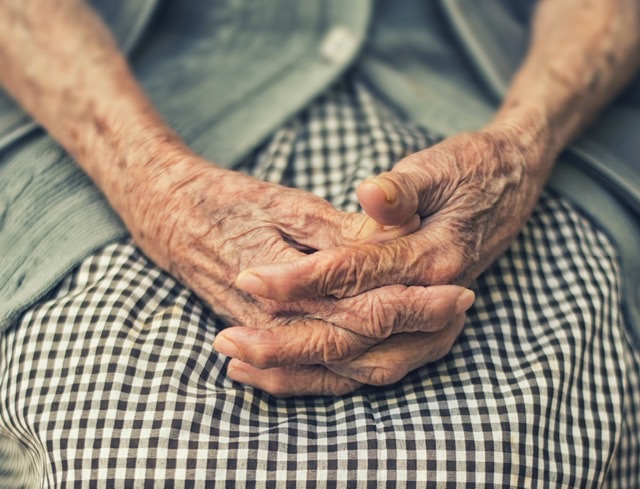Covid has blown the cover on much of what we need to maintain credibility as a humane nation. Care of older Australians is of priority concern.

Covid-19 has fractured our society’s carapace, wounding and revealing raw flesh beneath.
The damage is too much for a human mind to accommodate in its entirety so we ‘chunk’ it – unemployment, the amplification of poverty, the lost art, drama, music and sport, the cancellation of international travel and touring, the smashing of the dreams of small business, financial recession, and of course the hideous revelations and lonely deaths of citizens in aged care facilities (aka nursing homes, although they may not be). Each of these would be enough to cause national distress, but they are interlocked and ultimately inseparable and the total impact is immense.
The challenge of aged care facilities is clearly visible now in Victoria. In Canada, now doing well, the aged care sector was a major source of stress during peak times of the first wave of COVID. This sector in Australia, as we know and the Royal Commission is uncovering, is under-resourced at the best of times, not least with respect to qualified nursing staff. This has been known for ages and there are multiple drivers. It resembles our approach to Indigenous health care. We tut-tut as a society but do not resource our commitment adequately.
In an article in P and I (29th July) Patricia Edgar, an educator, and Don Edgar, a sociologist, write that “The interim report of The Royal Commission into Aged Care, Quality and Safety titled A Shocking Tale of Neglect pulls no punches … calling [such care] ‘unsafe and uncaring’ ‘cruel and harmful’, ‘poorly managed’, lacking ‘transparency and accountability’ with older people ‘left isolated and powerless’. The Report [also] documents hideous examples of neglect: inadequate management of wounds, poor continence management, malnutrition, assaults by staff, widespread over-medication, patchy palliative care with residents dying in distress.”
Tactical and strategic responses to aged care
The plight of our aged care arrangements calls for responses at two levels – the tactical, where we deal with current problems such as infection control and staffing expertise and numbers, and the strategic, where we ask questions about how we came to be in such a mess, what societal, political and economic changes we need to make to create the conditions for acceptable citizenship for older people, and what values we need to be resuscitate to justify our claim to be a humane nation.
We are currently concerned – and rightly – to meet the tactical demands for more skilled staff, more training and education in the use of preventive equipment and personal hygiene for staff.
The Royal Commission was presented with evidence that would depress the authors of such previous reports, including that called A Matter of Care concerning the workforce strategy for aged care https://www.health.gov.au/sites/default/files/a-matter-of-care-australia-s-aged-care-workforce-strategy-at-a-glance-the-14-strategic-actions-of-australia-s-aged-care-workforce-strategy_0.pdf. Nothing much has changed as a result.
In 2017, when the federal inquiry into the workforce in aged care was underway and resulting in the report just mentioned, the Australian Medical Association made a comprehensive submission based on the experience of its members with aged care facilities. While the official report makes its recommendations in careful bureaucratese, the AMA submission has a much harder and realistic edge to it. https://ama.com.au/system/tdf/documents/AMA%20submission%20to%20the%20Aged%20Care%20Workforce%20Strategy%20Taskforce.pdf?file=1&type=node&id=48123
Between 2003 and 2016, and probably more so now, personal care attendants (minimally trained) rose from 55% to 72% of this full-time workforce. Registered nurses decreased from 22% to 15%. Other skilled workers have declined proportionately. Nurse practitioners, a great asset in this context (based on overseas experience in systems such as Geisinger Health https://www.geisinger.org/about-geisinger) make up a tiny fraction of the workforce, as do allied health professionals.
We are progressively accepting the need for integrated care between hospitals and the community for multi-morbid, frail patients. The crucial role, in this effort, of GPs and nurse coordinators is coming to be understood, and to some extent, resourced. This redeployment of staff and effort is no small deal – much change to be managed. In the light of this move, now is the time to take account afresh of what is needed to re-fit aged care facilities to participate more fully in providing integrated care.
The strategic questions include the business model for aged care. We might ask whether aged care is appropriately rendered in the private sector. Private aged care facility operators currently are under heavy financial pressure, and that is before revisions are made to the model of care.
Privatisation of public services may work when inanimate entities such as poles and wires are involved – although even in this example serious questions arise about resulting electricity prices and gouging. Vocational and technical education in Victoria especially was seriously stuffed up when the glitter of privatisation seduced government agencies.
As the Covid crisis passes, and the pressure for tactical response diminishes, it will be time to consider the strategic questions – how do we want to care for our older citizens? What do they want? How much can we pay? How much of their care should we pay for and how much might they contribute? What workforce do we need? Where can the private and public systems best work together to support older Australians?




